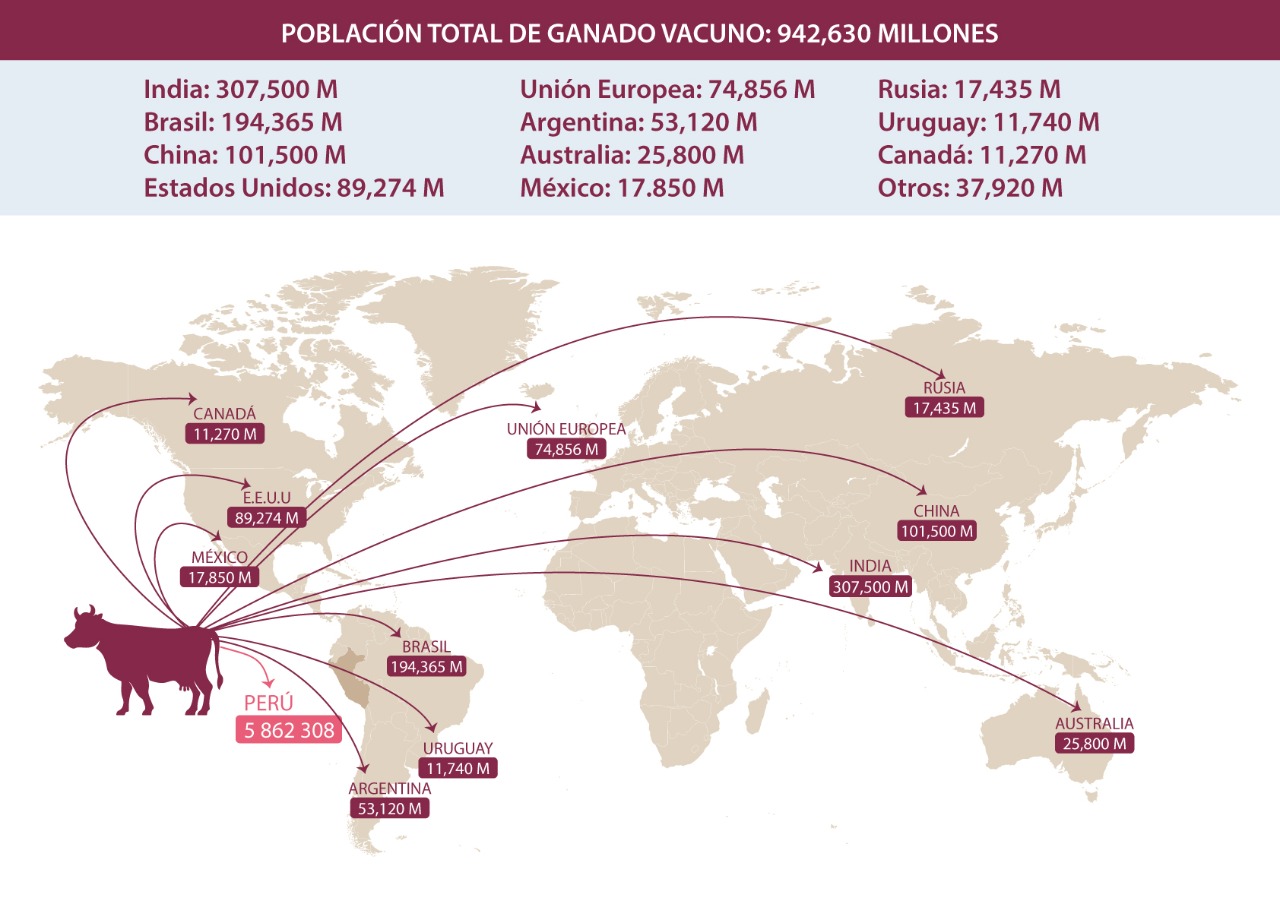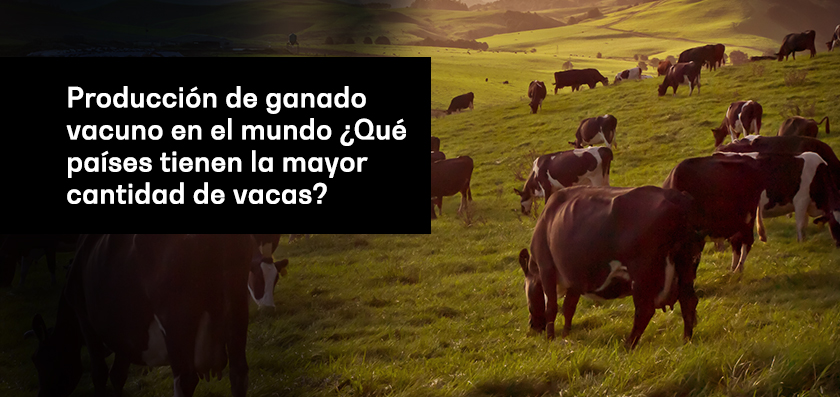Cattle production in the world Which countries have the largest number of cows?
Cattle (Bos Taurus) were domesticated more than 10,000 years ago from the aurochs (Bos primigenius primigenius). However, approximately 1,500 years later, a second domestication took place in the Indus Valley, giving rise to the zebu (Bos indicus) from Bos primigenius nomadicus (1). From this point on, cattle became increasingly important in people’s lives, playing a fundamental role in the development of humanity.
Livestock products account for almost half of the value of global agricultural production. Livestock production serves to address consumer demand for animal-based foods, non-food products (e.g. leather), production inputs (e.g. crop fertilizers), etc. Due to population growth and income growth, driven by economic development in rural areas, it is estimated that by 2050, global demand for meat and dairy products may increase by 63 and 30% respectively (2).
If per capita consumption remains unchanged, average demand for animal-based foods will increase from 1.4 billion to 2 billion tons by 2050. In developing countries, milk and beef production has gone from representing 31 and 22% of global meat and milk production, respectively, to 63 and 53% of global production during the period 1973-2013 (2).
How big is the world’s cow population?
According to the United States Department of Agriculture, there will be 942.63 billion heads of cattle in the world by 2023. The country with the largest number of cattle is India with a population of 307.5 billion cows. A big difference with respect to the second place, which is Brazil with 194.365 billion and the third place, China with 101.5 billion cows, representing between the three 64% of the world’s cattle population (3).
This is mainly because in India cows are considered sacred animals, so they are not slaughtered for meat consumption or when they are no longer productive. Instead, cow production is for consumption of milk and dairy products. As a result of the sacred status of these animals and the fact that they are not slaughtered, their population is much higher than in other countries. However, there are a large number of animals that do not produce or live on the streets. A livestock census carried out in 2012 reported 5.2 million heads of stray cattle (4).
Continuing the ranking, the United States comes next with 89,274 million, the European Union with 74,856 million, Argentina with 53,120 million, Australia with 25,800 million, Mexico with 17,850 million, Russia with 17,435 million, Uruguay with 11,740 million, Canada with 11,270 million and the rest of the countries add up to 37,920 million, representing only 4% of the total cattle population in the world (3). Of these countries, Uruguay has the largest number of cattle per capita in the world with 3.6 cows per person (5). In addition, the area used for cattle production represents approximately 75% of the country’s territory (6).
And in Peru, what is the size of the cattle population?
According to the Directorate of Statistics and Agricultural Information (DEIA) of the General Directorate of Statistics, Monitoring and Evaluation of Policies (DGESEP) of the Ministry of Agrarian Development and Irrigation (MIDAGRI), in Peru there is a population of 5,862,308 cattle and of these 945,553 are milking cows (7).
The production of fresh cow milk is 2,376 kg per cow per year with a total production of 2,246,946 tons of fresh milk. While a total of 192,718 tons of beef are produced with a yield of 146.4 kg of meat per cow for consumption (7).

Figure 1: Countries with the largest cattle population in the world


